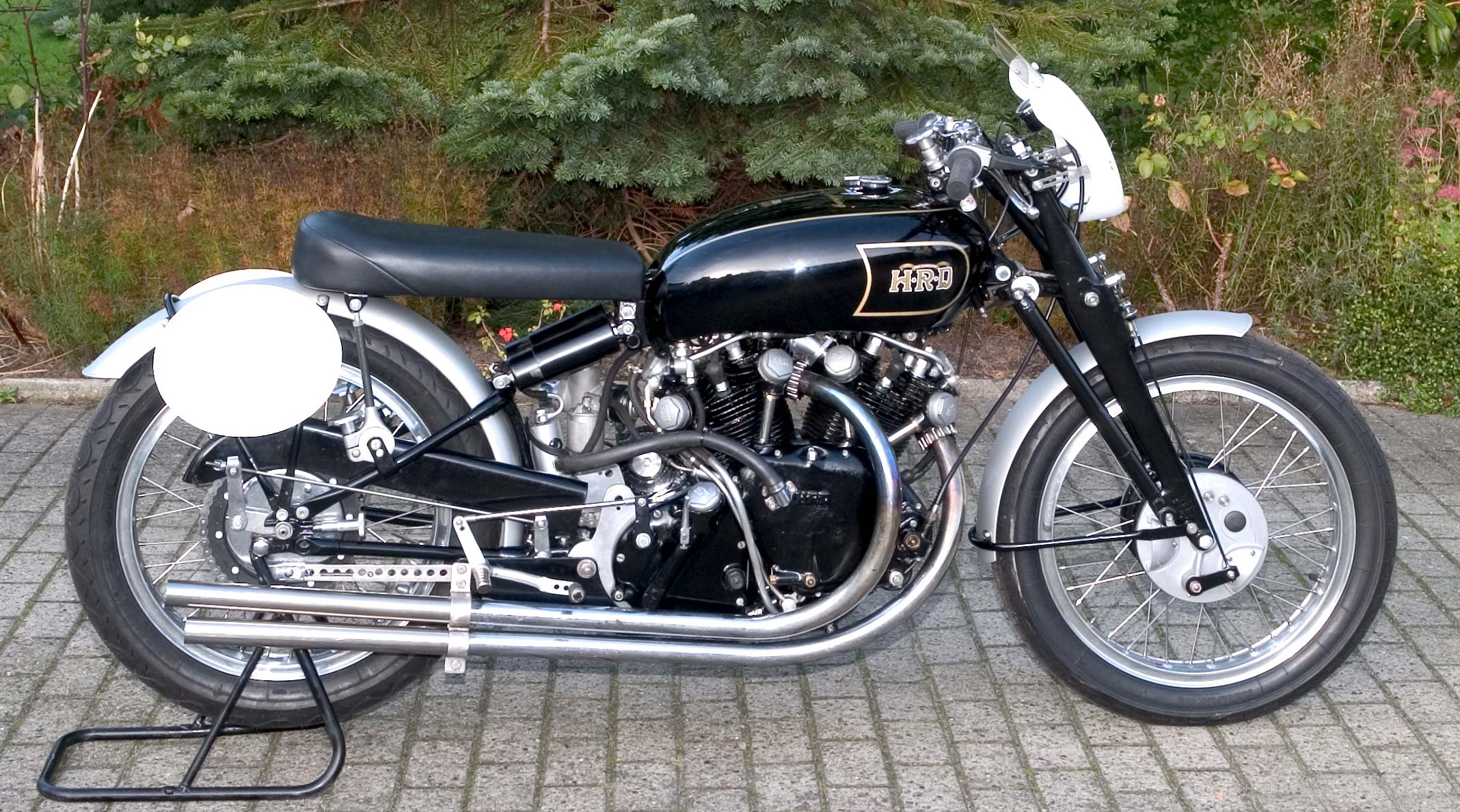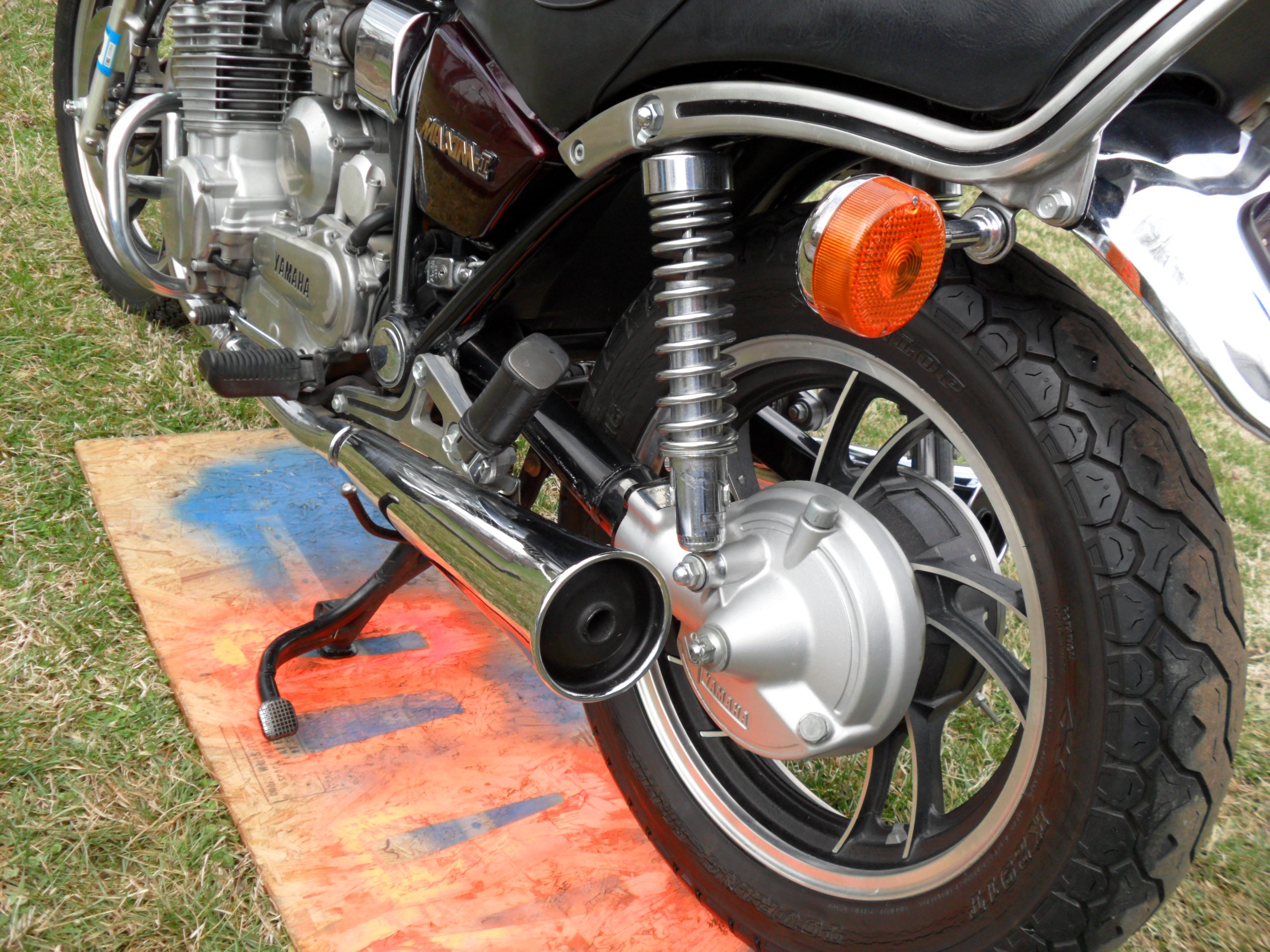|
Tornax
Tornax was a motorcycle manufacturer in Wuppertal, Germany. Tornax built its first motorcycle in 1926. This was the model I-26, which has a 600 cc single-cylinder side-valve engine imported from JAP in London, England producing 15 bhp. For the remainder of the 1920s all Tornax models featured side-valve and overhead valve (OHV) JAP engines of 500, 550 and 600 cc, apart from the V-28 in 1928 whose 600 cc side-valve engine was supplied by the German engine manufacturer Columbus in Bad Homburg. In 1930 Tornax produced its first twin-cylinder model, the III-30, which had a side-valve 1000 cc V-twin JAP engine producing . In 1931 it added a sports version, the III-31 SS, with a 1000 cc OHV JAP engine. Tornax claimed that this machine would produce , and guaranteed a top speed of 190 km/h (118 MPH). This model was very expensive, and economic conditions in the Great Depression meant that very few were sold. For 1932 the range remained unchanged, with all the model suffixes change ... [...More Info...] [...Related Items...] OR: [Wikipedia] [Google] [Baidu] |
JA Prestwich Industries Ltd
JA Prestwich Industries, was a British engineering equipment manufacturing company named after founder John Alfred Prestwich, which was formed in 1951 by the amalgamation of J.A.Prestwich and Company Limited and Pencils Ltd. History John Prestwich, an engineer, commenced manufacture of scientific instruments in 1895, when he was 20, initially behind his father's house at 1 Lansdowne Road, Tottenham, London. By 1911 he had moved to new premises in Tariff Road, within the Northumberland Park area of Tottenham, London, anwhich still exists as of 2015 Prestwich was initially best known for his cinematography cameras and projectors. He worked with S.Z. de Ferranti and later the cinema pioneer William Friese-Greene. Circa 1902 J.A.Prestwich and Company began manufacturing motorcycle engines which were used in many motorcycle marques. The motorcycle engines were associated with racing and record success and were used in speedway bikes into the 1960s. Prestwich also made engines for ... [...More Info...] [...Related Items...] OR: [Wikipedia] [Google] [Baidu] |
ILO-Motorenwerke
The ILO-Motorenwerke GmbH 2-stroke motor company in Pinneberg, Germany existed from 1911 to 1990 and was one of the biggest manufacturers of two-stroke engines in Germany. The term ‘ILO’ comes from the artificial language Esperanto and means "tool". 1n 1959 it was sold to _Rockwell_Manufacturing_Company">Rockwell Manufacturing Company. 1911 to 1930s. The company was founded in Hamburg in 1911. The founder Heinrich Christiansen bought a bankrupt machine factory, with 25 employees producing a track tamper-compactor for Prussian railway construction. Around 1918 the first two-stroke engine was developed to motorize the tamper. The plant expanded across from the railway system in nearby Pinneberg. The tamper machine was sold to Krupp in 1922 to concentrate on motors for motorcycles and small trucks. 1927 a bicycle auxiliary motor was developed and, in 1929 two-stroke ILO engines for agriculture tillers and pumps. In 1930s engines for three-wheel delivery vans were a big hit. 194 ... [...More Info...] [...Related Items...] OR: [Wikipedia] [Google] [Baidu] |
Overhead Camshaft
An overhead camshaft (OHC) engine is a piston engine where the camshaft is located in the cylinder head above the combustion chamber. This contrasts with earlier overhead valve engines (OHV), where the camshaft is located below the combustion chamber in the engine block. ''Single overhead camshaft'' (SOHC) engines have one camshaft per bank of cylinders. ''Dual overhead camshaft'' (DOHC, also known as "twin-cam".) engines have two camshafts per bank. The first production car to use a DOHC engine was built in 1910. Use of DOHC engines slowly increased from the 1940s, leading to many automobiles by the early 2000s using DOHC engines. Design In an OHC engine, the camshaft is located at the top of the engine, above the combustion chamber. This contrasts the earlier overhead valve engine (OHV) and flathead engine configurations, where the camshaft is located down in the engine block. The valves in both OHC and OHV engines are located above the combustion chamber; however an ... [...More Info...] [...Related Items...] OR: [Wikipedia] [Google] [Baidu] |
Suspension (motorcycle)
A motorcycle's Suspension (vehicle), suspension serves a dual purpose: contributing to the vehicle's handling and braking, and providing safety and comfort by keeping the vehicle's passengers comfortably isolated from road noise, bumps and vibrations. The typical motorcycle has a pair of fork tubes for the front suspension, and a swingarm with one or two shock absorbers for the rear suspension. Front suspension The most common form of front suspension for a modern motorcycle is the telescopic Motorcycle fork, fork. Other fork designs are girder forks, suspended on sprung parallel links (not common since the 1940s) and bottom leading link designs, not common since the 1960s. Some manufacturers (e.g. Greeves) used a version of the swinging arm for front suspension on their motocross designs. A single-sided version of the idea is also used in motor scooters such as the Vespa. The hub-center steering as developed by Ascanio Rodorigo, on a concept associated to Massimo Tamburin ... [...More Info...] [...Related Items...] OR: [Wikipedia] [Google] [Baidu] |
Swingarm
A swingarm, or "swinging arm" (UK), originally known as a swing fork or pivoted fork, is a single or double sided mechanical device which attaches the rear wheel of a motorcycle to its body, allowing it to pivot vertically. The main component of the rear suspension of most modern motorbikes and ATVs, it holds the rear axle firmly, while pivoting to absorb bumps and suspension loads induced by the rider, acceleration, and braking. Originally motorcycles had no rear suspension, as their frames were little more than stronger versions of the classic diamond frame of a bicycle. Many types of suspension were tried, including Indian's leaf spring suspended swingarm, and Matchless's cantilevered coiled-spring swingarm. Immediately before and after World War II, the plunger suspension, in which the axle moved up and down two vertical posts, became commonplace. In the latter, the movement in each direction was against coiled springs. Some manufacturers, such as Greeves, used swingarm ... [...More Info...] [...Related Items...] OR: [Wikipedia] [Google] [Baidu] |
Essen
Essen (; Latin: ''Assindia'') is the central and, after Dortmund, second-largest city of the Ruhr, the largest urban area in Germany. Its population of makes it the fourth-largest city of North Rhine-Westphalia after Cologne, Düsseldorf and Dortmund, as well as the ninth-largest city of Germany. Essen lies in the larger Rhine-Ruhr Metropolitan Region and is part of the cultural area of Rhineland. Because of its central location in the Ruhr, Essen is often regarded as the Ruhr's "secret capital". Two rivers flow through the city: in the north, the Emscher, the Ruhr area's central river, and in the south, the Ruhr River, which is dammed in Essen to form the Lake Baldeney (''Baldeneysee'') and Lake Kettwig (''Kettwiger See'') reservoirs. The central and northern boroughs of Essen historically belong to the Low German ( Westphalian) language area, and the south of the city to the Low Franconian (Bergish) area (closely related to Dutch). Essen is seat to several of the re ... [...More Info...] [...Related Items...] OR: [Wikipedia] [Google] [Baidu] |
Unit Construction
: ''For the vehicle design where the vehicle's skin is used as a load-bearing element, see Monocoque.'' Unit construction is the design of larger motorcycles where the engine and gearbox components share a single casing. This sometimes includes the design of automobile engines and was often loosely applied to motorcycles with rather different internal layouts such as the flat twin BMW models. Prior to unit construction, the engine and gearbox had their own separate casings and were connected by a primary chain drive running in an oil bath chaincase. The new system used a similar chain drive and both had 3 separate oil reservoirs for engine, gearbox and primary drive. Triumph and BSA were already using cast alloy chaincases and started converting to unit construction in the 1950s. A driving factor behind the BSA/Triumph change was that Lucas had declared an intention to abandon production of motorcycle dynamos and magnetos, and instead produce only alternators. By contrast ... [...More Info...] [...Related Items...] OR: [Wikipedia] [Google] [Baidu] |
Bomb
A bomb is an explosive weapon that uses the exothermic reaction of an explosive material to provide an extremely sudden and violent release of energy. Detonations inflict damage principally through ground- and atmosphere-transmitted mechanical stress, the impact and penetration of pressure-driven projectiles, pressure damage, and explosion-generated effects. Bombs have been utilized since the 11th century starting in East Asia. The term bomb is not usually applied to explosive devices used for civilian purposes such as construction or mining, although the people using the devices may sometimes refer to them as a "bomb". The military use of the term "bomb", or more specifically aerial bomb action, typically refers to airdropped, unpowered explosive weapons most commonly used by air forces and naval aviation. Other military explosive weapons not classified as "bombs" include shells, depth charges (used in water), or land mines. In unconventional warfare, other names can ... [...More Info...] [...Related Items...] OR: [Wikipedia] [Google] [Baidu] |
Allies Of World War II
The Allies, formally referred to as the United Nations from 1942, were an international military coalition formed during the Second World War (1939–1945) to oppose the Axis powers, led by Nazi Germany, Imperial Japan, and Fascist Italy. Its principal members by 1941 were the United Kingdom, United States, Soviet Union, and China. Membership in the Allies varied during the course of the war. When the conflict broke out on 1 September 1939, the Allied coalition consisted of the United Kingdom, France, and Poland, as well as their respective dependencies, such as British India. They were soon joined by the independent dominions of the British Commonwealth: Canada, Australia, New Zealand and South Africa. Consequently, the initial alliance resembled that of the First World War. As Axis forces began invading northern Europe and the Balkans, the Allies added the Netherlands, Belgium, Norway, Greece, and Yugoslavia. The Soviet Union, which initially ha ... [...More Info...] [...Related Items...] OR: [Wikipedia] [Google] [Baidu] |
Factory
A factory, manufacturing plant or a production plant is an industrial facility, often a complex consisting of several buildings filled with machinery, where workers manufacture Manufacturing is the creation or production of goods with the help of equipment, labor, machines, tools, and chemical or biological processing or formulation. It is the essence of secondary sector of the economy. The term may refer to a rang ... items or operate machines which process each item into another. They are a critical part of modern economic production, with the majority of the world's goods being created or processed within factories. Factories arose with the introduction of machinery during the Industrial Revolution, when the Capital (economics), capital and space requirements became too great for Putting-out system, cottage industry or workshops. Early factories that contained small amounts of machinery, such as one or two spinning mules, and fewer than a dozen workers have been ca ... [...More Info...] [...Related Items...] OR: [Wikipedia] [Google] [Baidu] |
Two-stroke Engine
A two-stroke (or two-stroke cycle) engine is a type of internal combustion engine that completes a power cycle with two strokes (up and down movements) of the piston during one power cycle, this power cycle being completed in one revolution of the crankshaft. A four-stroke engine requires four strokes of the piston to complete a power cycle during two crankshaft revolutions. In a two-stroke engine, the end of the combustion stroke and the beginning of the compression stroke happen simultaneously, with the intake and exhaust (or scavenging) functions occurring at the same time. Two-stroke engines often have a high power-to-weight ratio, power being available in a narrow range of rotational speeds called the power band. Two-stroke engines have fewer moving parts than four-stroke engines. History The first commercial two-stroke engine involving cylinder compression is attributed to Scottish engineer Dugald Clerk, who patented his design in 1881. However, unlike most later t ... [...More Info...] [...Related Items...] OR: [Wikipedia] [Google] [Baidu] |






